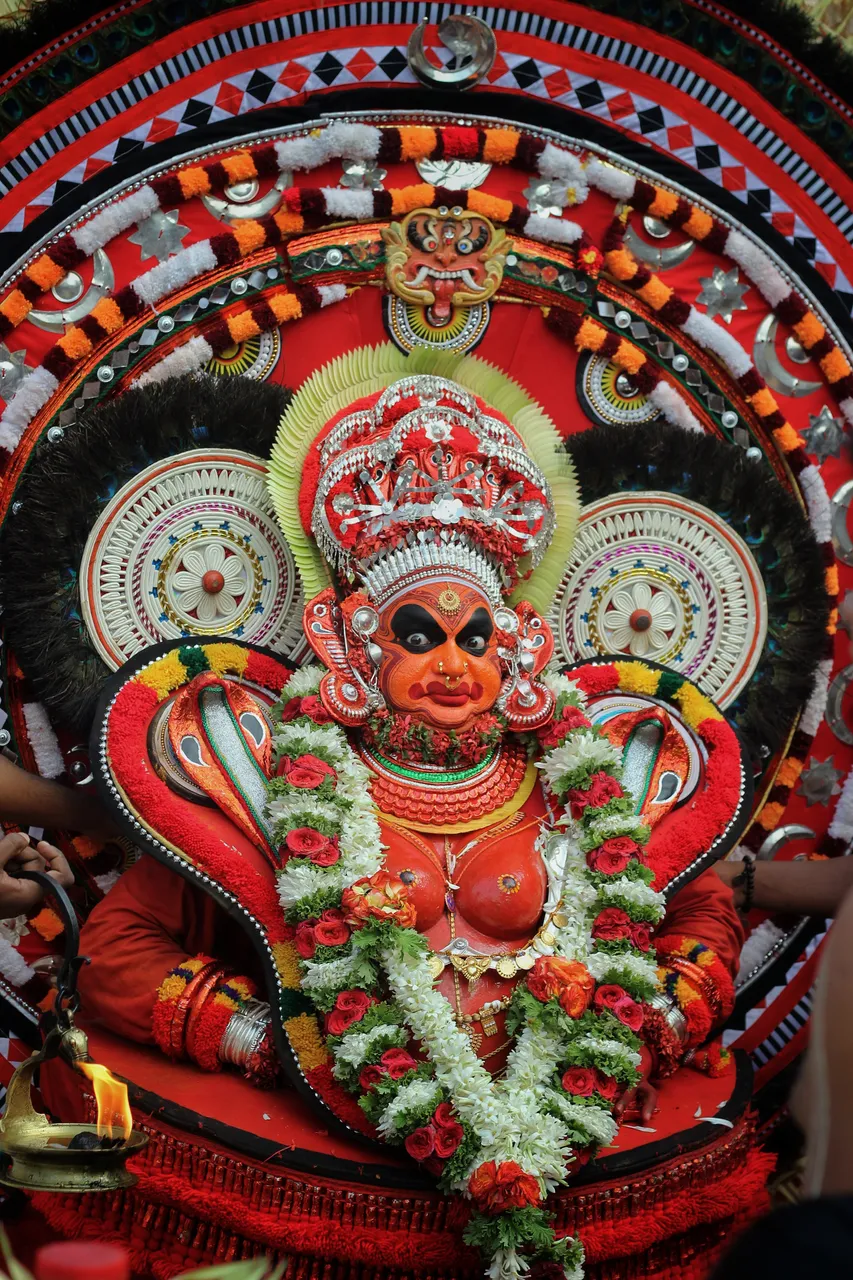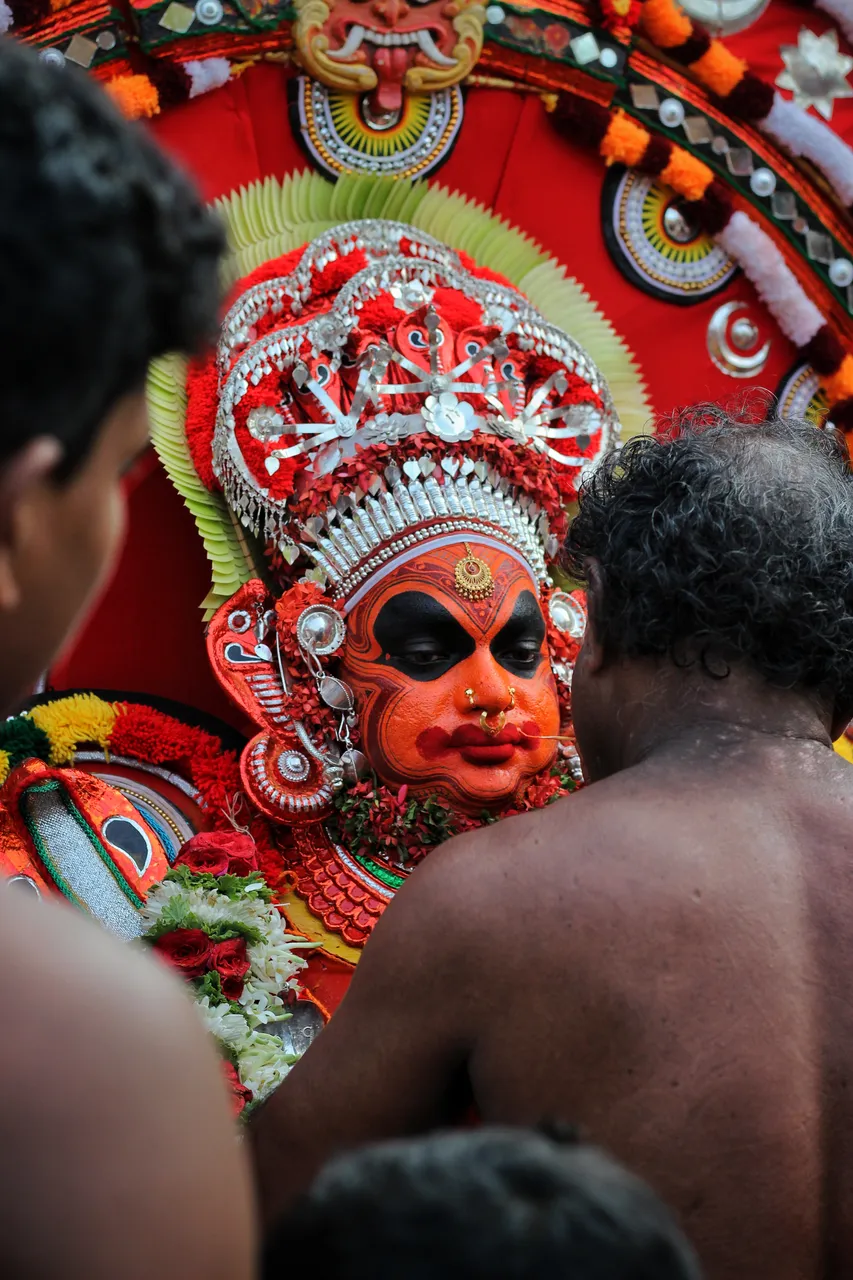
The mythical tales and mythological stories of India are often enacted in form of dance or drama or dance drama on stage. Most of the time, professional activists and theater artists organize such stage performances to bring in a social reform, convey a message to the mass and awaken society for a cause through entertainment. It is more of a commercialized art or social activism with a purpose, and less of a festive tradition to appease or please the Divine. One such ceremonial tradition is Kerala’s Theyyam Festival.
The great stories of Kerala are often retold using art forms. It is here that our legends truly come to life. Theyyam is a famous ritual art form that originated in North Kerala which brings to life the great stories of our State. It encompasses dance, mime and music. It exalts the beliefs of the ancient tribals who gave a lot of importance to the worship of heroes and the spirits of their ancestors. The ceremonious dance is accompanied by the chorus of such musical instruments as Chenda, Elathalam, Kurumkuzal and Veekkuchenda. There are over 400 separate Theyyams, each with their own music, style and choreography. The most prominent among these are Raktha Chamundi, Kari Chamundi, Muchilottu Bhagavathi, Wayanadu Kulaven, Gulikan and Pottan.

Each artist represents a hero with great power. Performers wear heavy make-up and adorn flamboyant costumes. The headgear and ornaments are truly majestic and fill one with a sense of awe and wonder. From December to April, there are Theyyam performances in many temples of Kannur and Kasaragod
"There can be no doubt", say Bridget and Raymond Alchin, "that a very large part of this modern folk religion is extremely ancient and contains traits which originated during the earliest periods of Neolithic, Chalcolithic settlement and expression" mainly there is no doubt, giving from fremin
Out of devotion, ruling clans established their own shrines and Kavus for Theyyam deities where non-sattvic rituals and customs are observed. The Goddesses like Rakteshwari, Chamundi, Someshwari, Kurathi, and the Gods like Vishnumoorthi are propitiated in these household shrines. There, the Theyyam dancers appear during the annual festivals of Gods and Goddesses. The rituals in such shrines are different from those of the Brahminical temples. The impact of this cultural fusion could be traced to the social organisation based on the caste system and in the agrarian relations. The inviting of Brahmin Thanthri to consecrate the idols of Kavu is a recent development
Photo coursey::https://www.instagram.com/roshith_r_nair/